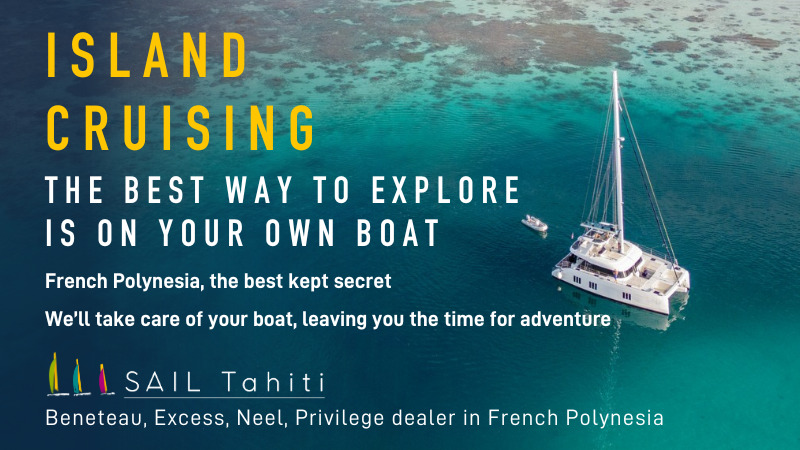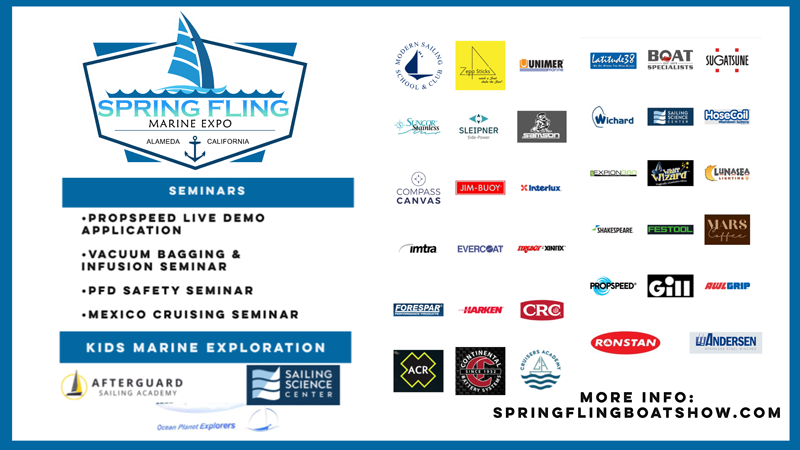
- General Sailing
- Repair & Maintenance
- Current News
- Maritime History
- Environmental News
- Working Waterfront
Tall Ship ‘Stad Amsterdam’ Hosts the Blue Tech Future
If only sailors ran the world. There’s nothing that makes us more upbeat than connecting with sailors who continue the innovations that started powering windships around the world, and continue to demonstrate creative thinking inspired by the forces of nature. We were fortunate to be invited by photographer, freelance writer and SF Blue Tech founder Martha Blanchfield to attend a reception for some of California’s blue tech innovators aboard the tall ship Stad Amsterdam. Numerous blue tech creators attended to connect and hear from Danish skipper Sune Blinkenberg about what the ship is doing to move up the sustainability curve.
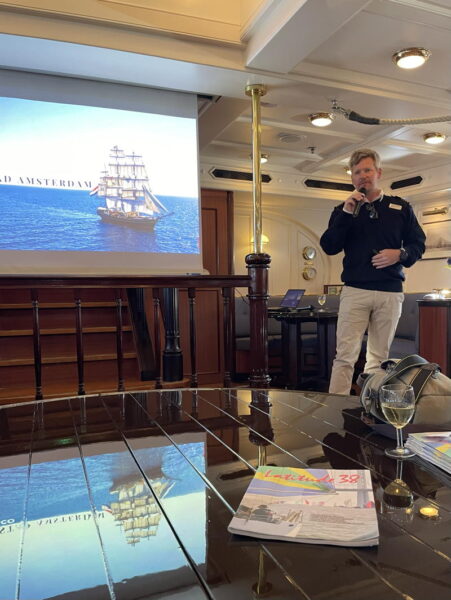
Captain Blinkenberg is one of the captains leading the multinational crew of the tall ship, run and owned by the international HR consulting firm Randstad Holding and the city of Amsterdam. He explained that while the ship still relies on fossil fuels, the participants have been dedicated to upgrading and incorporating the latest technology to reduce both the carbon footprint and their ecological impact. Ultimately they want to get back to where tall ships started — with the ability to travel around the world without using fossil fuels, although with the comfort, convenience and schedules of modern life. Clipper ships were pushing the limits of technology in the late 1800s, and ships like the Stad Amsterdam are doing the same today.
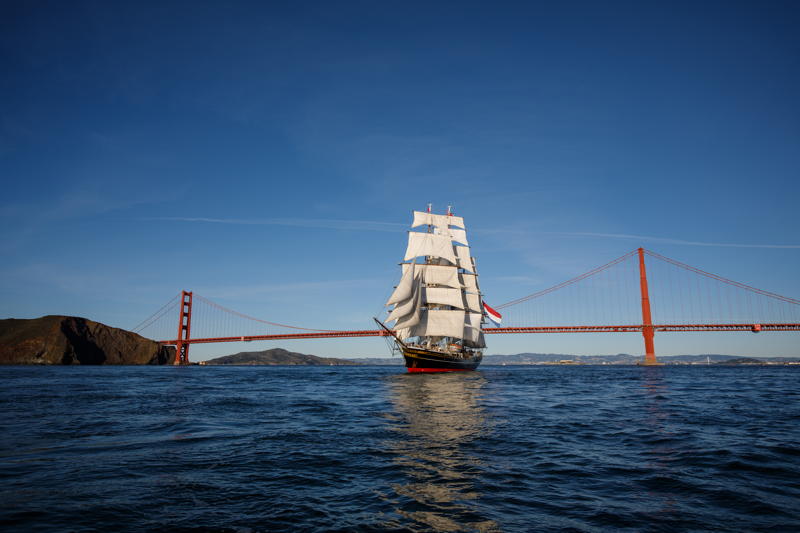
First and foremost, the Stad Amsterdam aims to sail. The ship, launched in 2000, is 250 feet long with 31 sails that collectively set almost 24,000 square feet (or half an acre) of sail on masts reaching up 154 feet. The ship is traditionally rigged and moves along at a steady 10-15 knots under sail. Because of normal prevailing winds, they were able to sail only 25% of the time on the Panama-to-San Francisco leg of their round-the-world mission. On board they also have a wastewater system that turns all waste into drinkable water to minimize pumping human waste into the ocean. They’ve upgraded their diesel power plant for better efficiency, and continue to look at diesel electric hybrid and hydrogen fuel cell options for the future. Randstad HR also looks to the future by incorporating youth employment programs to help develop trade skills, leadership and teamwork for tomorrow’s work force.
The presentation from Captain Blinkenberg was followed by a presentation from San Francisco’s Chief Climate and Sustainability Executive/Director of SF Environment Tyrone Jue, who was appointed by Mayor Breed in July 2023. He highlighted San Francisco’s legacy as a technology, sustainability and climate leader that continues with the goal of reaching net zero carbon by 2040. Jue sees the engineers who built the Bay Area’s social-media titans moving from companies like Google, whose motto is “Don’t Be Evil,” to companies whose mission is to actually do good. The collection of innovative minds in the room and the inspiration of the Bay Area’s steady breezes and ocean connection make it an obvious hub for blue tech leadership.
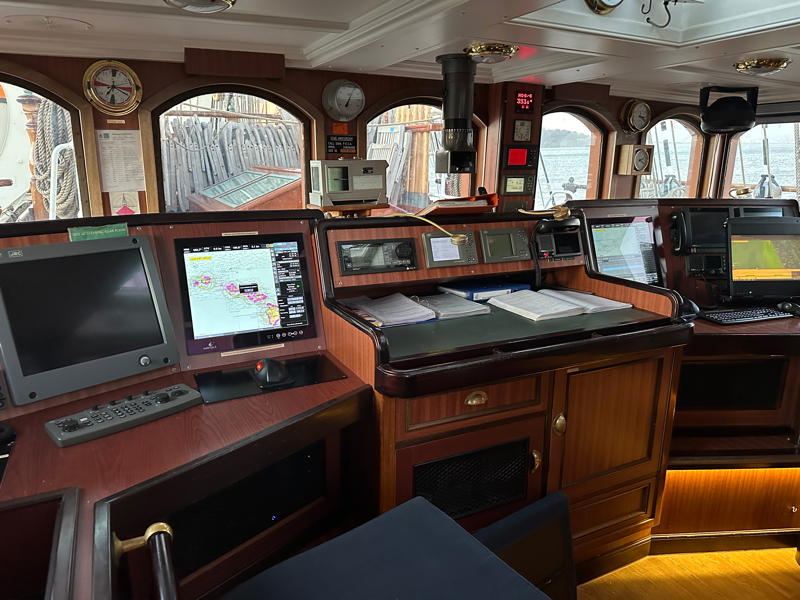
In August 2023, Martha Blanchfield started SF Blue Tech, which, to date, has hosted local happy-hour mixers. The goal is putting blue tech companies, ocean and coastline stewards, plus sailing leaders, all into one room to connect and help our waterways. The special March 17 blue tech leader reception was hosted aboard the Stad Amsterdam as members of that team immediately recognized the value of their collaboration. Blanchfield stated, “It’s my wish the gathering serves as a springboard to strengthen ocean dialogue, build more blue connections, and foster future sustainability efforts.”
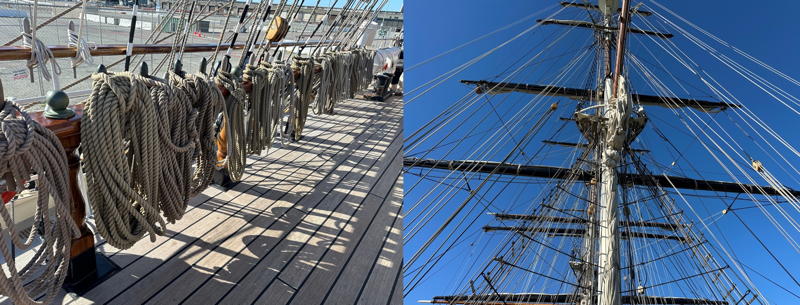
Some of the blue tech developers in attendance on Sunday included Thomas Boerner (co-founder/CTO,) and Michael Kelly (hydrodynamic and mechanical engineer) of CalWave Power Technologies, and co-founder/CEO Marcus Lehmann, plus his family. Other leaders included CEO/co-founder of Scoot Science Dr. Jonathan LaRiviere and his young son, from Santa Cruz. On the West Coast, there is also strong interest in seaweed farming. California mariculture proponents are hopeful that complex permitting and permissions required by regional and state entities may eventually start to ease.
What does blue tech green energy look like? Much of it is under development, but for the curious, below is a video from CalWave on their evolving wave power technology. Fast, foiling electric ferries from Navier are another local source of development, as well as the autonomous Saildrone ocean research vessels. Both are dramatically reducing fossil fuel usage in traditional maritime operations.
Currently SF Blue Tech members include blue tech startups, groups working to restore the ocean, coastlines and wetlands, maritime and ocean studies students and educators, biologists, scientists, blue AI and ML, water tech and ocean scientists, analysts, inventors, blue tech angels, investors, sailors and members of the marine trades. Latitude 38 collects its stories on the maritime trades and waterfront blue tech innovation on our Working Waterfront page.
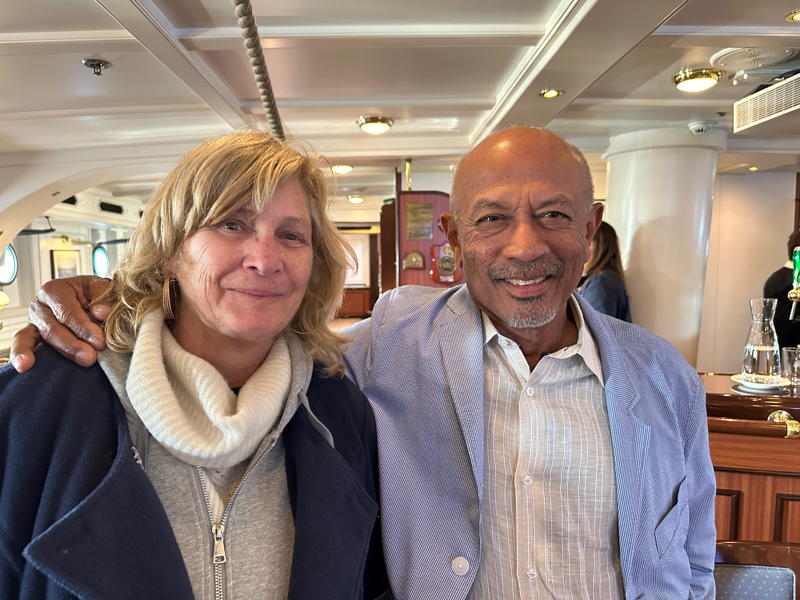
Hans and Sophie List from the Master Mariners Benevolent Association and Alan Olson and his wife Angie Lackey from Call of the Sea/Matthew Turner were on hand to encourage the blending of the old and new. The classic-rigged tall ship Matthew Turner features one of the most technically advanced diesel electric hybrid propulsion systems installed on any large sailing vessel. Its large battery bank can be charged by regeneration from the prop while the vessel is under sail.
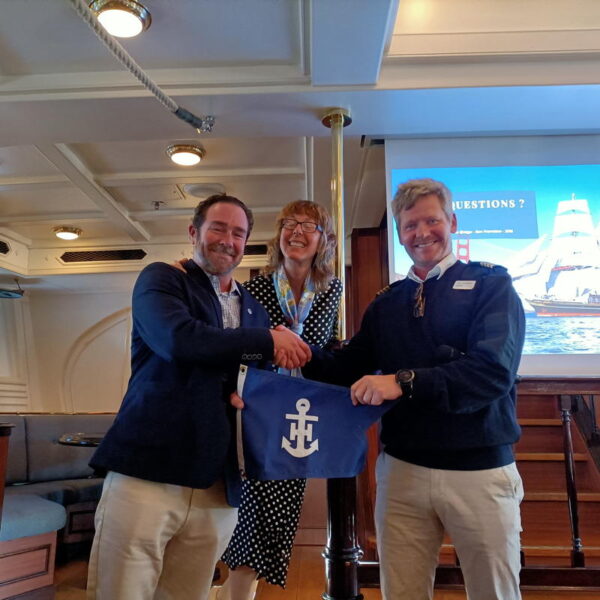
Key things SF Blue Tech is working toward: continuation of networking events, a blue speaker series, blue tech/ocean trade shows, improved access to funding/support/work space for startups, mentoring, job fairs, accelerator-/incubator-type support, and building a network of advisors from universities, employers, foundations and more.
The Stad Amsterdam is in the middle of a global circumnavigation, with local sailor Pat Broderick of the Wyliecat 30 Nancy on board for the leg from Hawaii to Japan. She’ll then travel the coast of Asia to Australia, across the Indian Ocean, around the Cape of Good Hope, across to the Caribbean and up the East Coast before ending her two-year circumnavigation in Europe in August 2025.
The words of Herman Melville ring true when the world might look dire. It is the inspiration that comes from sailing, sailors, tall ships and the dreamers and creators who develop technologies in alignment with nature that will move the world and ourselves forward.
From Moby Dick, “Whenever I find myself growing grim about the mouth; whenever it is a damp, drizzly November in my soul; whenever I find myself involuntarily pausing before coffin warehouses, and bringing up the rear of every funeral I meet; and especially whenever my hypos get such an upper hand of me, that it requires a strong moral principle to prevent me from deliberately stepping into the street, and methodically knocking people’s hats off — then, I account it high time to get to sea as soon as I can.”
The Stad Amsterdam Departs This Sunday
If you’re feeling it’s “high time to get to the sea” to cheer up and get out on the Bay again, the Stad Amsterdam will be leaving this Sunday, so you can sail out in your “small ship” to send off the tall ship. She’ll be leaving from piers 30/32 in San Francisco at 10 a.m. on Sunday, the 24th, and proceeding to the Golden Gate headed toward Honolulu, on what looks likely to be be a sunny day with a fresh northwesterly. See you out there.
Pacific Cup Profiles: Erica Mattson and the Moore 24 ‘Accelerando’
We continue our Pacific Cup profiles with Erica Mattson and her Moore 24 Accelerando. Erica entered her first Pac Cup race in 2022, together with her stepfather Robin Jeffers. But she almost didn’t make the start line, due to a lack of boat.
“After it was decided that we should do the Pacific Cup in 2022, I was on a mad hunt for a Moore 24,” Erica says. “I was falling short on available boats for sale and nearly threw in the towel.”
But a friend came to the rescue and alerted Erica to hull #128 for sale in Sausalito, and Erica and her husband John closed the deal in February 2021.
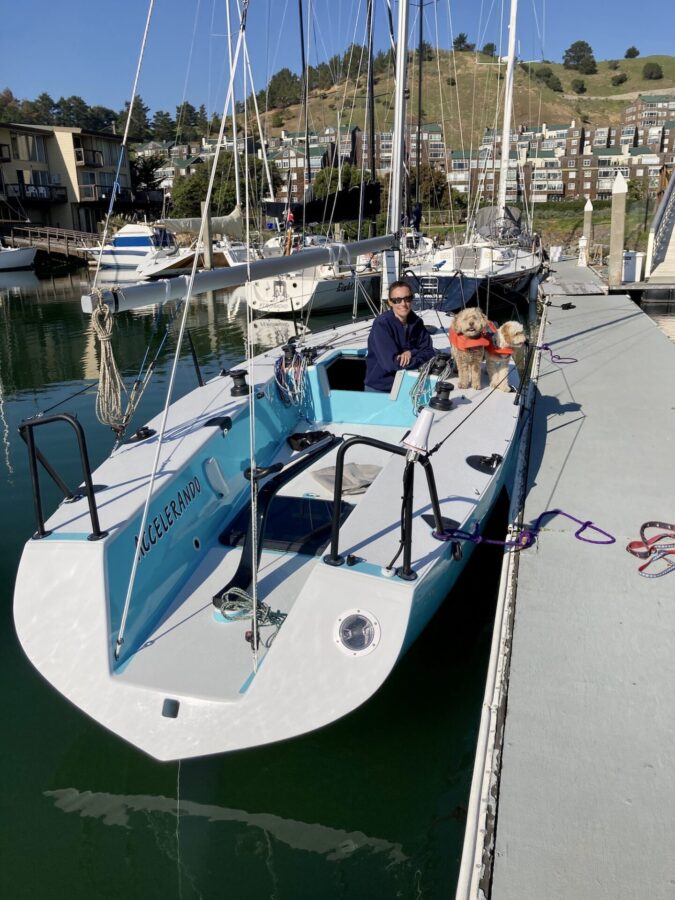
“How did we not know about this boat? My husband has been the fleet secretary for centuries,” she exclaims, adding that they immediately called the experts to make it into an offshore machine. “Craig Smith, Elkhorn Composite, cut out the transom and rebuilt the deck. Larry Tuttle, WaterRat Blades, built a high-aspect rudder. Buzz Ballenger, Ballenger Spars, built the new rig and boom, and Scott Easom, Easom Rigging, masterminded the final product — a beautiful boat.”
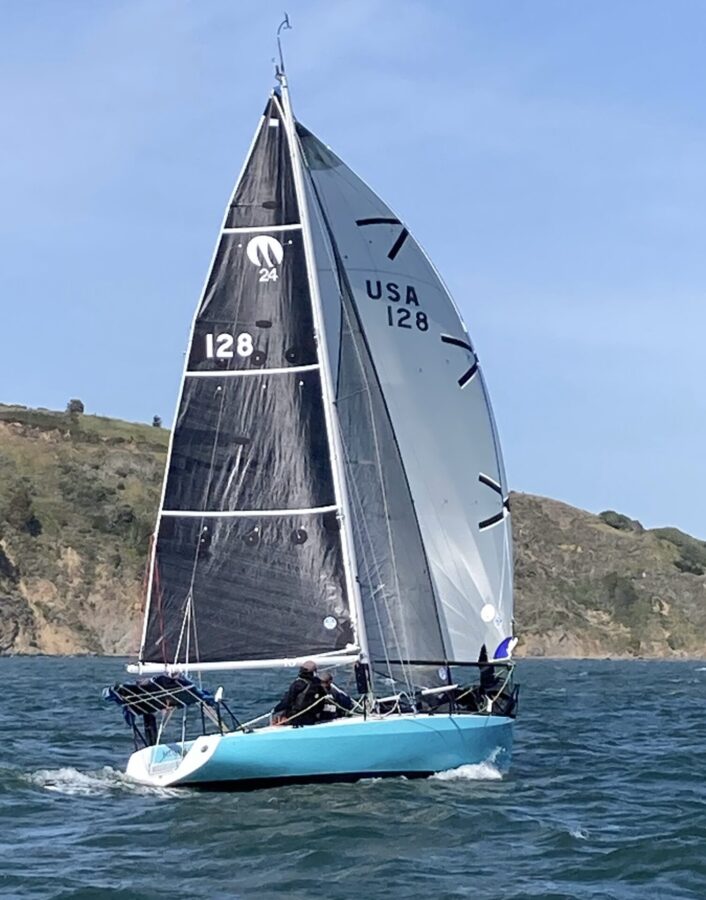
Erica’s offshore sailing experience includes the Pacific Cup, a delivery from Puerto Vallarta to Santa Cruz, a few trips around the Farallon Islands, and some coastal racing. She claims she is primarily “a dinghy and round-the-buoy sailor.
“I grew up sailing in my hometown, Monterey (MPYC). I later joined St. Francis and, most recently, Richmond.”
In the mid-’90s, Erica was racing the one-design Europe dinghy and qualified for the US Sailing Team, and embarked on an Olympic campaign. “Now, my focus is racing with my husband, John, on his Moore 24, Moorigami (aka The Bickersons).”
Aside from her Moore 24 addiction, Erica also races in the J/105 fleet with Ian and Natalie Charles aboard Maverick. Conversely, her Pac Cup crewmate Robin has completed more Hawaii and other ocean crossings than one can count. “I am convinced Robin has webbed feet,” Erica says. “He is not a landlubber and only comes ashore for Ms. Betsy (Mom).”
On how she came to enter the Pacific Cup, Eric is coy and alludes to being influenced by the season, a family reunion, and wine.
“It was Thanksgiving 2020. It was the first time I had seen my parents in a while. The world was on lockdown. Robin and I started chatting, and we decided we should sail to Hawaii doublehanded. Brilliant idea! Therefore, it had to be the Pacific Cup and on a Moore 24. That said, growing up on Monterey Bay, there is a draw to the sea and an allure to someday sail to Hawaii.”

Both sailors are looking forward to another opportunity to conquer the race, having lost their electronics on day three of the 2022 race and thereafter relied on their handheld GPS. “… which made for interesting tactics.
“Regardless, I love that I am doing this with my dad. Memories of a lifetime … even though we’re nuts.
“Mahalo, and see you in Kaneohe!”
See our previous Pacific Cup profiles here: Alex Dailey and Philippe Jamotte, Andy Schwenk, Matt Arno, Elliott James, and Heather Richard.
Sail Tahiti — Your Boat Purchase Can Be the Adventure of Your Dreams
Sail away from Europe, or sail in the South Pacific. We will coach you and ensure your safety and your boats maintenance along the way. ⛵️🏝More information here: www.sailtahiti.com/en/island-cruising-on-your-own-yacht
Max Ebb Talks Time and Ratings in ‘A Pox on Both Their Houses’
“Max, how are we doing?” It was a fair enough question, but one I could not answer. I was navigating a very big, very new, and very expensive racing yacht in a very prestigious regatta. Well, actually Lee Helm was calling all the shots; this ride was well above my usual pay grade. Lee had suggested I come along as an “owner interface.” My job was to translate all the mysterious tactical and sail-trim calls to something the owner, who claimed to love sailing but had never actually skippered a race boat of any size, could comprehend.
“It’s very close,” I answered, hedging my bets.
The problem was that we would not know our time allowance relative to other boats until the race was over.
“It’s a 25-mile course,” volunteered the chief mainsail trimmer, without looking down from the rig. “If this were time-on-distance under PHRF, we would have to be two and a half minutes ahead at the finish. I think we’ve got ’em.”
“Except that it’s, like, time-on-time,” Lee added, looking up from her tablet that mirrored the full set of instrumentation. “The wind conditions have been favorable to us, so that means our rating is going to be less favorable by the time the RC sorts it all out after the race. Let’s not count chickens based on time-on-distance.”
“How much time do we give them for a 25-mile course in time-on-time?” asked the owner. He was mainly concerned with only one other boat, his usual archrival. The crew suspected that there was also a side bet involved.
“Depends on the time, not the distance,” I explained. “Think in terms of minutes per hour and seconds per minute of sailing time.”
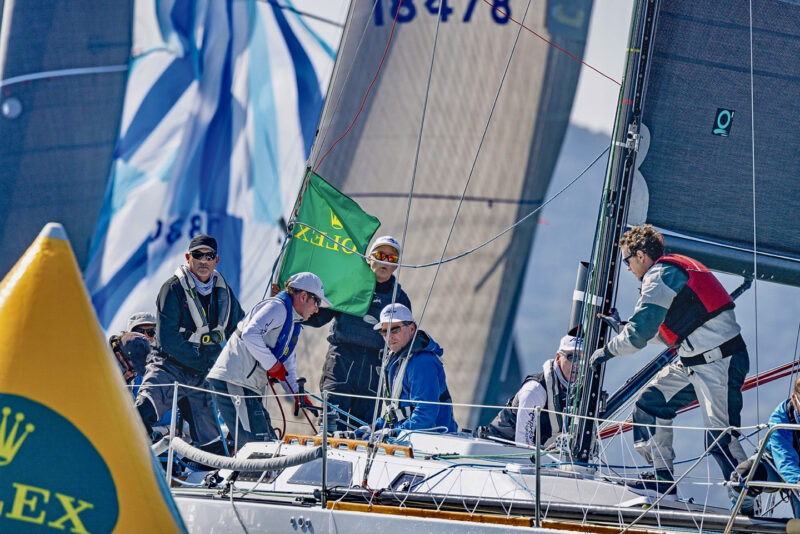
“The problem,” suggested the mainsail trimmer, “is that we all know the PHRF numbers for most of the boats in the fleet, but we never remember the speed correction factors after the PHRF numbers are converted to time-on-time ratings. I think the blame falls on the PHRF Committee. They should publish ratings as time-on-time speed factors instead of time-on-distance numbers. Those are the numbers we should be conversant with. It would save a step converting to time-on-time.”
“Good point,” I agreed. “I know my own PHRF rating, and I know the ratings for all the boats I usually race against, so if I know the distance I can work out how much time I have to give each competitor, all in my head.”
“But there’s, like, a problem doing that with time-on-time,” Lee explained. “Time-on-distance numbers can be subtracted from each other to get time allowance per mile from any one boat relative to any other. For example, if my rating is 126, and I’m racing against a boat that rates 168, I know I have to give the other boat 42 seconds per mile. Can’t do that with time-on-time speed factors! Those ratings translate to… let’s see… 0.962 and 0.905, using the usual formula. The difference is 0.057, but that doesn’t tell me anything. I have to find the ratio between the two speed factors, and then convert to seconds per hour, and like, even I can’t do that in my head.”
“Still,” insisted the trimmer, “we would be one step closer if the ratings were published as speed factors.”
Continue reading in the March issue of Latitude 38.
It’s Been a Great Start to the New Year of Sailing
It’s been a great start to the sailing season. As we get ready to send our April issue off to the printer, we had a quick look at the first three issues of the year, plus our annual Northern California Sailing Calendar.
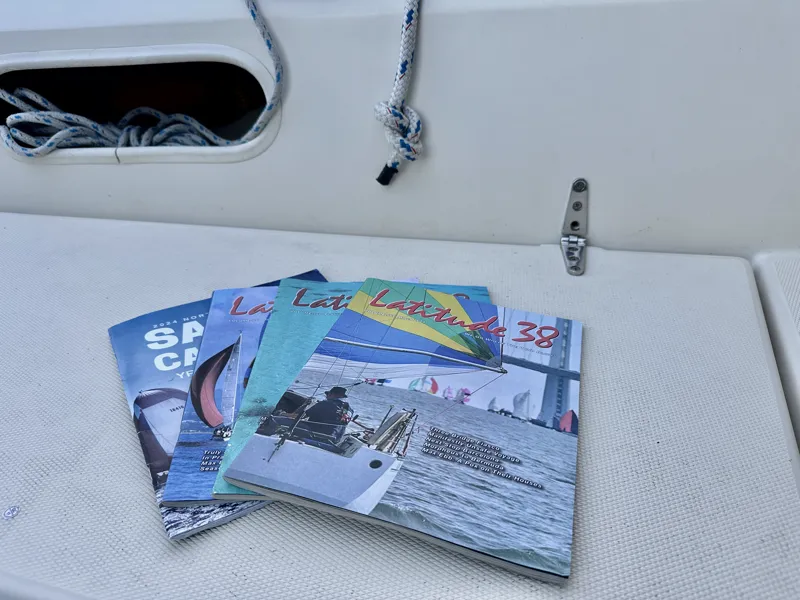
If you haven’t had time to read through them all yet, don’t worry, you’re not alone. If you keep one in the “head,” at your bedside or coffee table, or in your bunk, they’re still there to transport you into the world of West Coast sailors.
The January issue catches us up with 2023 race winners, a Baja Bash, Max Ebb and more. The February issue has an eye-opening article by James Frederick on cruising the South Pacific. There were some negative stories circulating, but James debunks those myths. Paradise is still paradise. The March issue includes our race editor Christine Weaver’s story on the hills and valleys of sailing this year’s Three Bridge Fiasco. It was January sailing at its best, with some of the most frustrating and glorious moments you can have while racing the Bay in the winter.
In every issue our writer Tim Henry puts together the “Letters” column with letters and comments from our readers, and John Riise puts together our “Changes in Latitudes” section chronicling the adventures of West Coast cruisers. You can subscribe or pick up a hard copy of our magazine at one of almost 600 marine outlets on the West Coast. Look for an outlet like advertiser Compass Canvas on our map here.
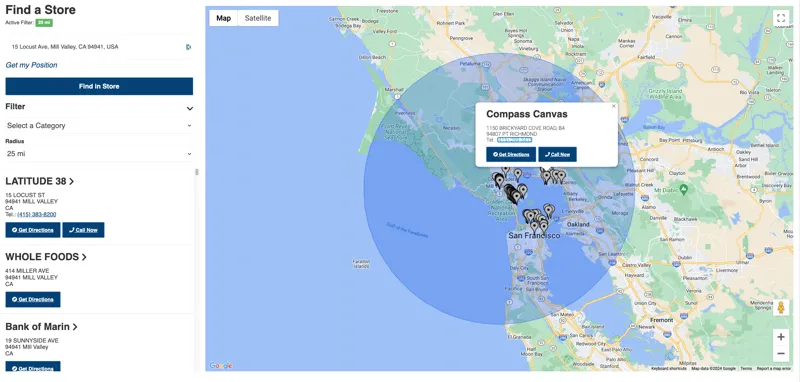
If you flip open your handy copy of the Northern California Sailing Calendar to the month of March, you’ll notice there’s plenty of racing going on this weekend, plus an invitation from J/24 Fleet 17 and the Folkboat class to join their ranks. Both are active fleets that welcome new members. The April issue is heading to the printer this week and will be mailed to subscribers and start deliveries to distributors on Friday next week. As they say, “Watch for it.”
Mark Your Calendar for Svendsen’s Spring Fling April 12/13!
Get your tickets today! More info at www.springflingboatshow.com.

